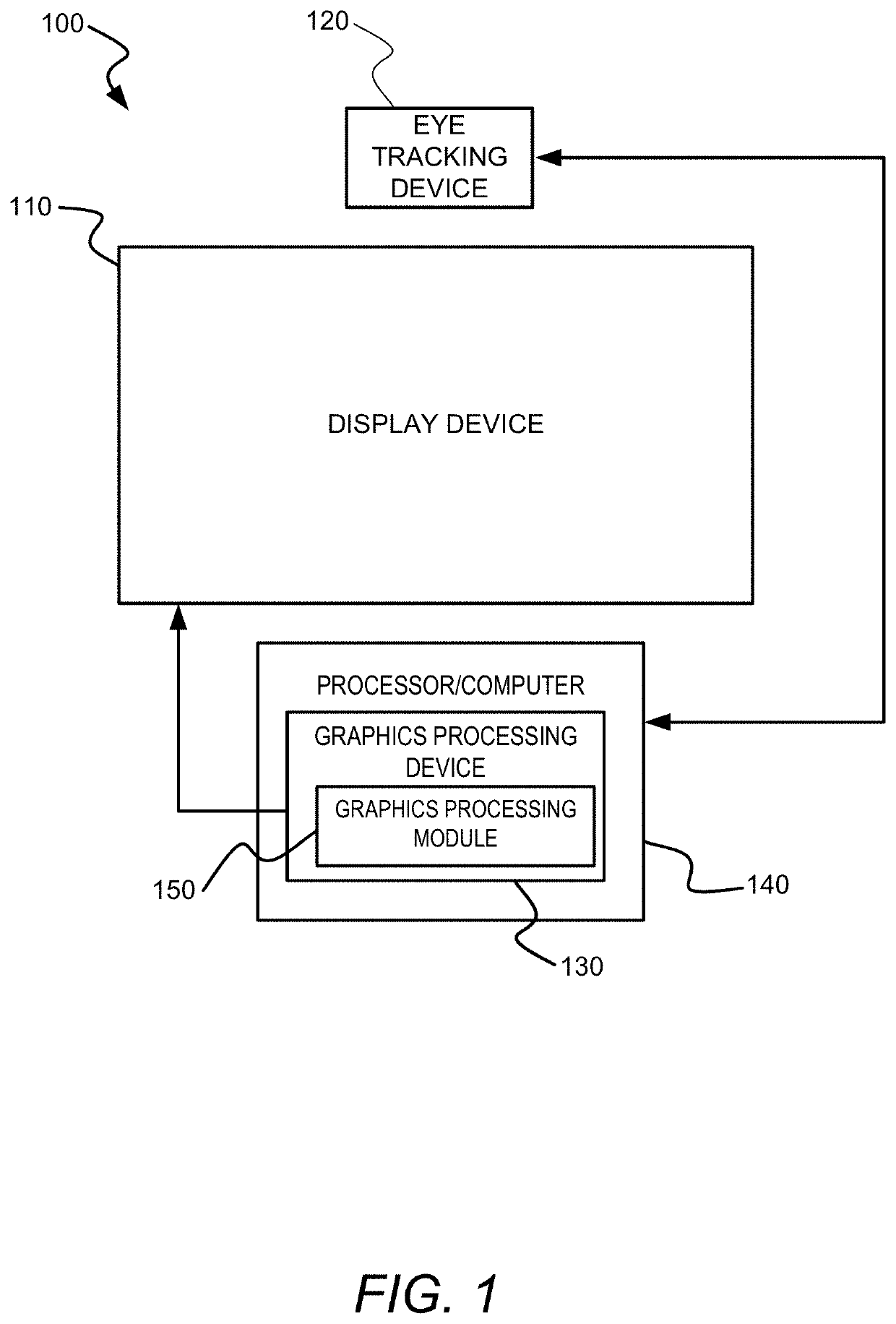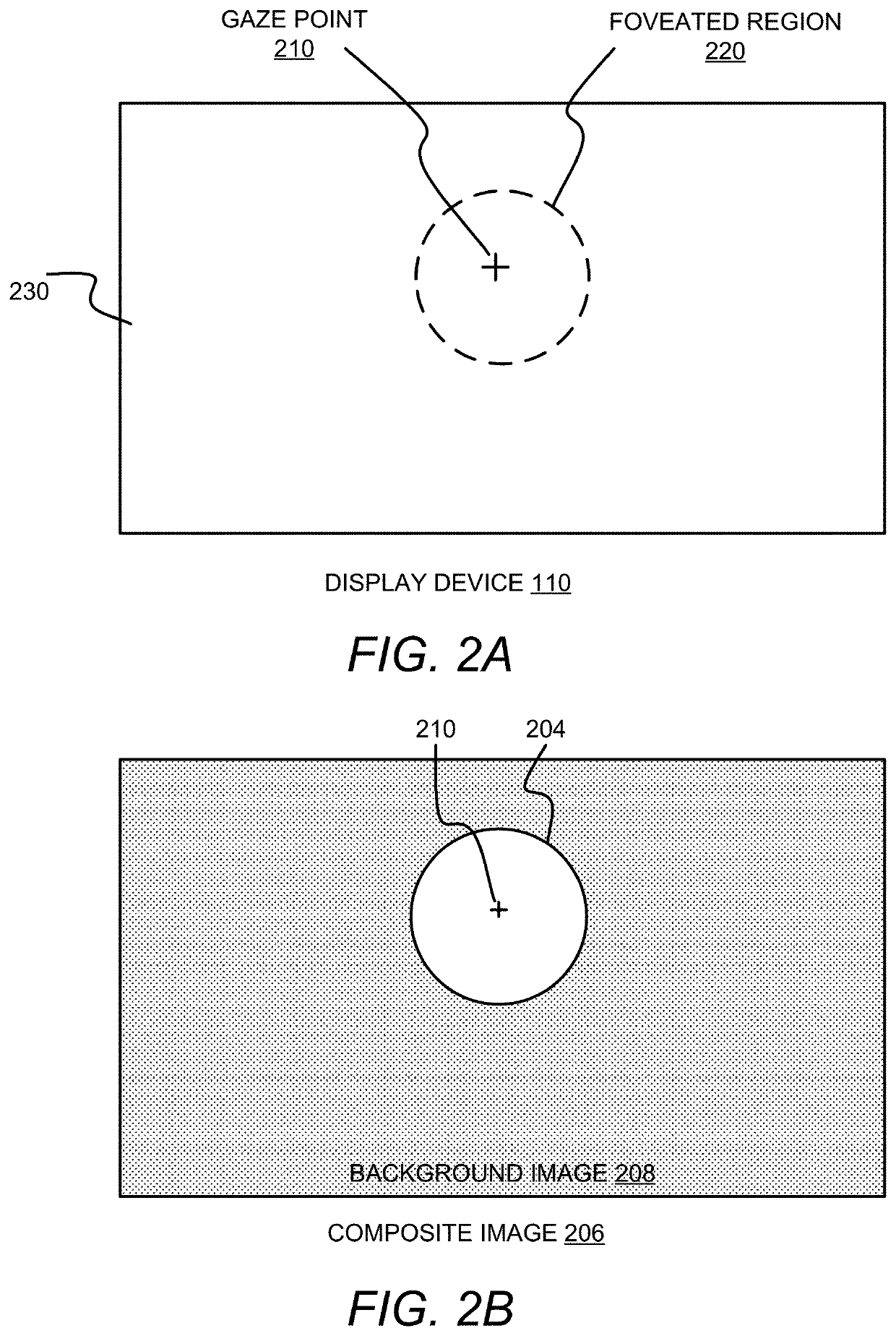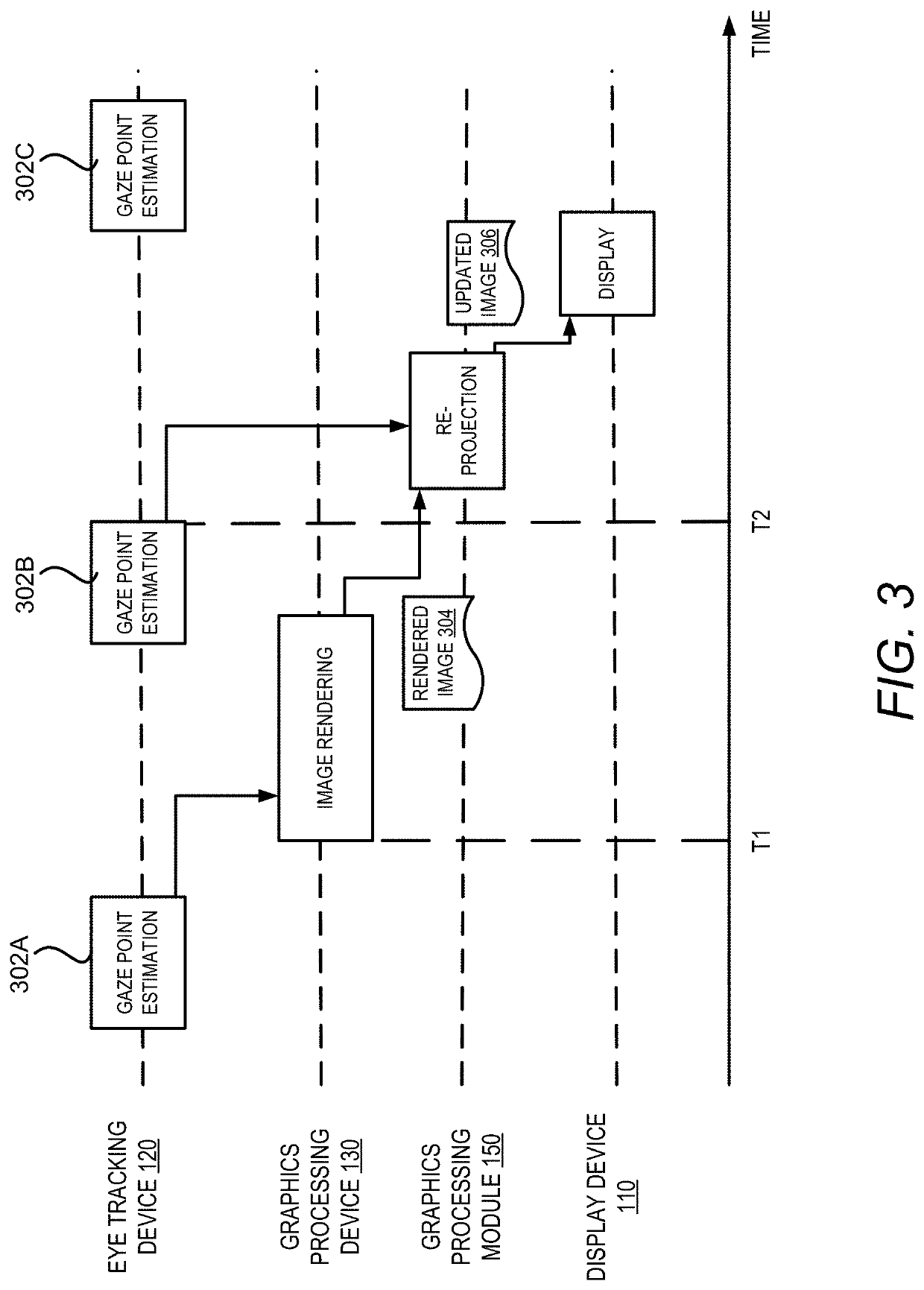Image re-projection for foveated rendering
a technology of foveated rendering and image, applied in the direction of instruments, static indicating devices, optical elements, etc., can solve the problems of limited processing power and memory capacity of graphics processing devices performing rendering, difficult rendering of scene, especially real-time rendering, etc., to improve the position of an image to be displayed, and improve the position of an imag
- Summary
- Abstract
- Description
- Claims
- Application Information
AI Technical Summary
Benefits of technology
Problems solved by technology
Method used
Image
Examples
Embodiment Construction
[0016]Embodiments for improving foveated rendering through image re-projection are disclosed. In an example, a graphics processing device receives a first estimation of a predicted gaze point of a user on a display device. Based on the first estimation of the predicted gaze point, the graphics processing device implements or cause to be implemented foveated rendering by generating a high-quality portion of the image corresponding to a foveated region containing the first estimation of the predicted gaze point of the user, and the remaining part of the image for the non-foveated region. The estimation of the predicted gaze point of the user is determined before the start of rendering the high-quality portion of the image. After rendering the high-quality portion of the image has started, the graphics processing device receives a second estimation of the predicted gaze point of the user. The graphics processing device determines if the second estimation of the predicted gaze point of ...
PUM
 Login to View More
Login to View More Abstract
Description
Claims
Application Information
 Login to View More
Login to View More - R&D
- Intellectual Property
- Life Sciences
- Materials
- Tech Scout
- Unparalleled Data Quality
- Higher Quality Content
- 60% Fewer Hallucinations
Browse by: Latest US Patents, China's latest patents, Technical Efficacy Thesaurus, Application Domain, Technology Topic, Popular Technical Reports.
© 2025 PatSnap. All rights reserved.Legal|Privacy policy|Modern Slavery Act Transparency Statement|Sitemap|About US| Contact US: help@patsnap.com



